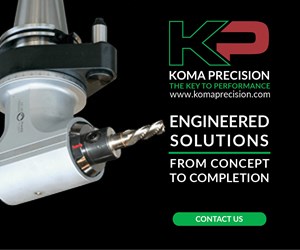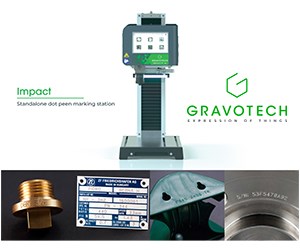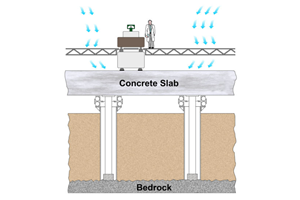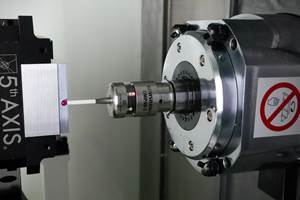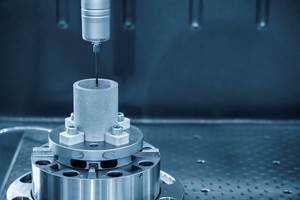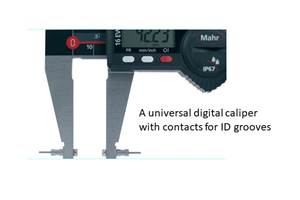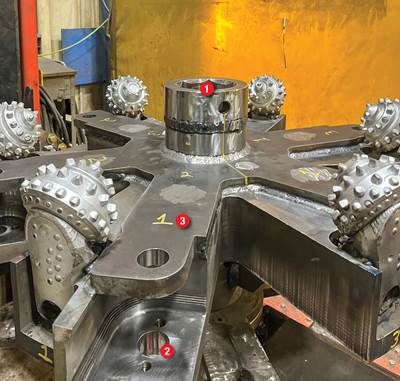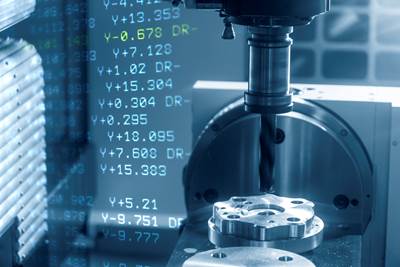Automated Laser Scanning Using a Collaborative Robot
This device is said to be the first programmable laser scanning system to enable automated 3D scanning, dimensional measurement and dimensional gaging leveraging a collaborative robot platform.
Manufacturers are increasingly integrating automated processes. For machine shops, this is commonly exemplified in the form of robots loading/unloading CNC mills, lathes and so on. In fact, recent advances in collaborative robot technology, that is, robots that can safely operate alongside shopfloor employees without protective fencing, are opening up opportunities for shops to apply automation in new ways.
Perceptron, manufacturer of a range of industrial metrology equipment, brings the collaborative robotics concept to automated part inspection and gaging with its AutoScan Collaborative Gauge, which I discovered at a recent open house at Exact Metrology in Cincinnati, Ohio. Keith Mills, Perceptron’s vice president of global marketing, says AutoScan is the first programmable laser scanning system to enable automated 3D scanning, dimensional measurement and dimensional gaging leveraging a collaborative robot platform.
The AutoScan is an alternative to conventional manual laser scanning devices in which users continuously maneuver the laser across the surface of a part like they’re “painting” it. Conversely, the programmable, collaborative robot platform enables automated part scanning routines to be performed alongside shopfloor employees sans the safety infrastructure that’s required for conventional robots.
The system’s three primary components are the collaborative robot, Perceptron’s Helix 3D laser scanning sensor and its Vector software. The scanning sensor is mounted to the arm of the six-axis robot, which uses built-in force-sensing technology that causes it to stop its movement if it makes contact with a person (rated to the ISO 10218-1:2011 safety standard for industrial robots). The AutoScan has a robot reach radius of 1,300 mm and sensor standoff of 200 mm (larger work areas are available), offering a rigid, fixed mount or optional mobile stand to enable it to be deployed in different areas of a shop as needed.
The Helix laser scanner uses MEMS (micro-electro-mechanical systems) solid state optical technology, and all workpiece feature scanning is performed with the multi-axis robot in a static position. Mr. Mills says that with this approach, the robot is used purely as a positioning device for the end-of-arm laser scanner. That way, potential measurement errors due to robot acceleration and possible robot structure deflection, for instance, aren’t introduced into the scanning process.
The Helix scanning sensor uses a Class 2M laser to capture a 3D digital representation of the part and reports complex form and surface deviations relative to the part’s CAD model, together with discrete information for critical features such as holes, slots and studs. Self-teach capability enables robot movement to be programmed manually by moving the robot to each scanning position. All robot moves are then automatically written to the part inspection program to enable subsequent parts to be inspected automatically. Extensive metrology experience is not required to program or use the device, Mr. Mills says.
As many as 200 scan lines per feature can be programmed with automatic feature extraction from the generated point cloud dataset, enabling multiple features to be inspected with the robot in a static mode. The configurable laser line density enables scan line intervals to be defined as small as 0.1 mm, and laser line length and orientation of ±45 degrees is said to be easily programmed.
Vector analysis and reporting software offers real-time status monitoring, showing immediate results via a measurement monitor, tolerance limit alarms and a one-shot view of part trending. It also offers an SPC reporting package with historical database for traceability, data analysis for process improvements and remote access to inspection results. The software features comprehensive geometric dimensioning and tolerancing (GD&T) capabilities as well as a self-teaching “Autosolve” feature extraction based on feature type for measurement of holes and studs, for example.
Related Content
How to Calibrate Gages and Certify Calibration Programs
Tips for establishing and maintaining a regular gage calibration program.
Read MoreWhat Should Machinists Know About In-Machine Probing?
In-machine probing doesn’t reach the power of CMMs but can still be useful for pre- and mid-process control, as well as for “rough screening” of parts.
Read MoreParts and Programs: Setup for Success
Tips for program and work setups that can simplify adjustments and troubleshooting.
Read MoreChoosing the Correct Gage Type for Groove Inspection
Grooves play a critical functional role for seal rings and retainer rings, so good gaging practices are a must.
Read MoreRead Next
The Cut Scene: The Finer Details of Large-Format Machining
Small details and features can have an outsized impact on large parts, such as Barbco’s collapsible utility drill head.
Read More3 Mistakes That Cause CNC Programs to Fail
Despite enhancements to manufacturing technology, there are still issues today that can cause programs to fail. These failures can cause lost time, scrapped parts, damaged machines and even injured operators.
Read More
.jpg;width=70;height=70;mode=crop)
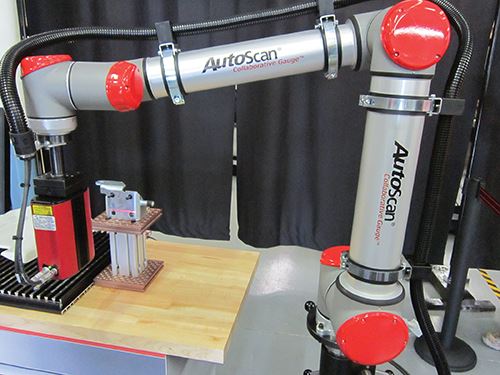
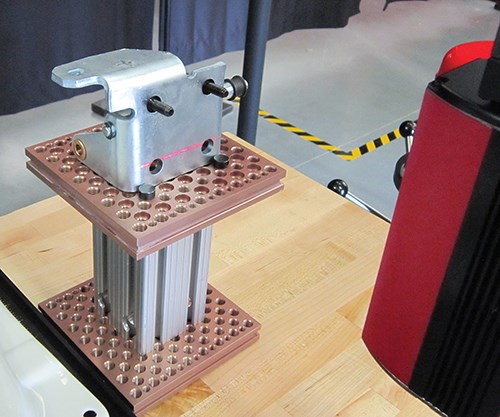
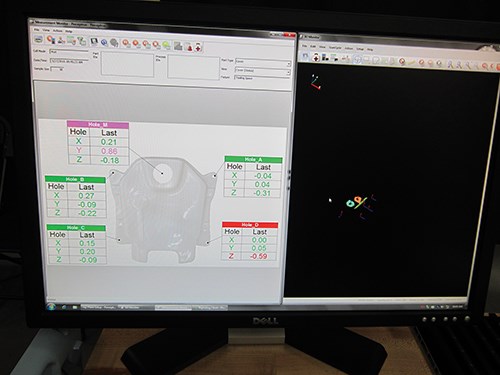
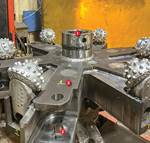


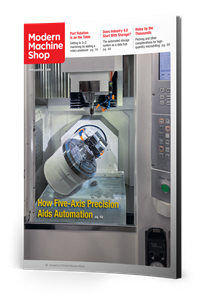
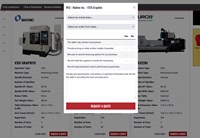


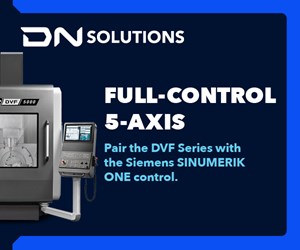

.png;maxWidth=300;quality=90)

.png;maxWidth=300;quality=90)
